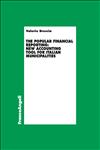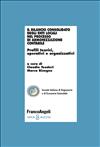
Introduction: The study compares two banking systems that have marked and mark the current system in Europe and the Middle East. The Monti di Pietà of 1500 and the Islamic banks which have developed several key features of the past, present the pillars of the Neo-Aristotelian concept of common good. Aim of the work: The study aims to identify the historical, cultural, and accounting factors, similarities, and ethical principles of the two models to identify key ele-ments supporting the common good concept. Methodological approach: This study adopts a historiographical approach that delves into the relationship between narrative, interpretive, and explanatory history, in which it argues that the historical narrative involves elements of interpretation and explanation. Furthermore, a considerable importance is given to the banking environment’s political, religious, and regulatory aspects. Main findings: The analysis conducted traces ethical, cultural, and religious components, highlighting many aspects that confirm the starting theory and enrich its conception through financial models that are apparently distant from each other. The study highlights how reciprocity, solidarity, and support for the social fabric of growth have joint agreements and aspects characterizing the two models. Originality: The study provides and integrates significant elements on which the concept of the common good is based.


